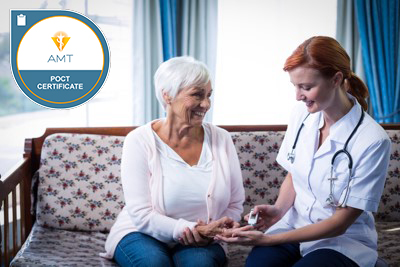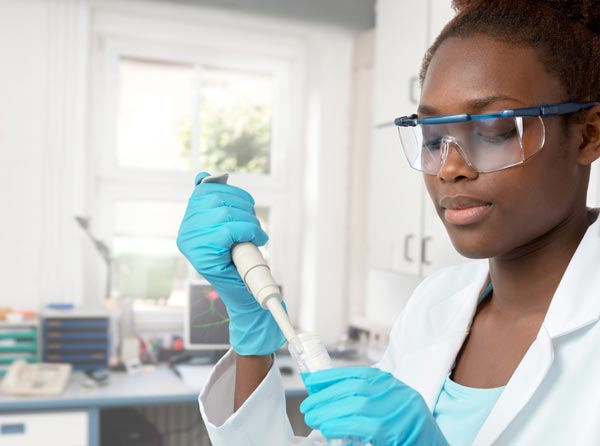Laboratory technologists and technicians of all experience levels are seeing significant changes in how various tools and testing techniques are utilized. Here are a few to keep an eye on in the upcoming year.
Based on an article from the AMT Pulse, Spring 2020.
New Generation Informatics Tools
In order to solve issues around capturing and accessing data, scientists and researchers need to have hands-free capabilities from anywhere in the lab. Leveraging mobile and voice technology for all parts of the lab might help solve the problem, according to a recent LabTwin blog.
Single Platform Collection
Lab scientists often waste significant time collating and harmonizing data. With new single-platform collection tools, scientists will be able to automatically collect, collate and access data from one central location. This could include lab operations that will be touchless and available in the cloud.
Research and Development Automation
Automating R&D is a critical part of laboratory advancement. For example, data connectivity tools, as noted above, will also go hand-in-hand with data standardization and provide lab scientists with more advanced analytics. In addition, with the adoption of fifth-generation wireless networks, lab automation will be faster and allow for more secure data exchanges and integration.
Consolidated Laboratory Design
Traditionally, labs were designed according to the testing being conducted (e.g., chemistry, hematology, microbiology, virology, urinalysis, etc.) Today, most labs use a form of “open” design; disciplines that were once separated by walls are now in one core area of research/analysis. Segregation of certain laboratory services is still needed in some areas such as microbiology, blood bank or PCR clean/dirty rooms.
Point-of-Care Testing
 Point-of-care testing (POCT) brings several lab tests to the patient’s bedside or treatment area. It can be a powerful tool in immediate care settings, during surgeries, certain outpatient settings, home testing, screening at health fairs and emergency disaster scenes. The POCT hand-held devices require minimal training and maintain strict quality control protocols, using a wireless interface. They often ensure a high level of accuracy and timely test results.
Point-of-care testing (POCT) brings several lab tests to the patient’s bedside or treatment area. It can be a powerful tool in immediate care settings, during surgeries, certain outpatient settings, home testing, screening at health fairs and emergency disaster scenes. The POCT hand-held devices require minimal training and maintain strict quality control protocols, using a wireless interface. They often ensure a high level of accuracy and timely test results.
To help address this growth and need for training, AMT offers a POCT Certificate Course, designed to advance the skills, knowledge, and competencies of health care professionals who routinely perform point-of-care laboratory testing. This course includes 8 modules with knowledge checks and quizzes that prepare one for the 100 multiple-choice question final assessment.
Telepathology
Several laboratory disciplines, including pathology, are taking advantage of telemedicine. With improved computer capacity and bandwidth, and the use of high-resolution digital imaging, healthcare providers are finding telepathology extremely helpful when quick turnaround times are critical. Telepathology is also being used with fine needle aspirations by providing preliminary diagnosis and/or specimen adequacy.
Molecular Diagnostics
The molecular diagnostics field is growing at a rate of 35%-40% annually, according to healthmanagement.org. These types of diagnostics are now becoming standard practice for various genetic diseases, including cystic fibrosis and hereditary haemochomotosis; sexually transmitted diseases such as HPV and chlamydia; and leukemias/lymphomas (B- and T-cell rearrangements, JAK). A  new procedure is the microarray assay used to measure gene expression. The Target DNA samples are embedded on a matrix (silicon chip, nylon membrane or glass slide) that contains a few to hundreds of thousands of genes or gene sequences. Known probes are hybridized with the target samples to eventually reveal the complementary gene nucleotides. This new tool is not yet common practice but holds promise for the future.
new procedure is the microarray assay used to measure gene expression. The Target DNA samples are embedded on a matrix (silicon chip, nylon membrane or glass slide) that contains a few to hundreds of thousands of genes or gene sequences. Known probes are hybridized with the target samples to eventually reveal the complementary gene nucleotides. This new tool is not yet common practice but holds promise for the future.
AMT also has a certification in molecular diagnostics that may aid an individual’s understanding and career growth.
References
labtwin.com/blog/2020-trends-in-lab-informatics-insight-from-labtwin
healthmanagement.org/c/hospital/issuearticle/an-american-perspective-current-trends-in-laboratory-management